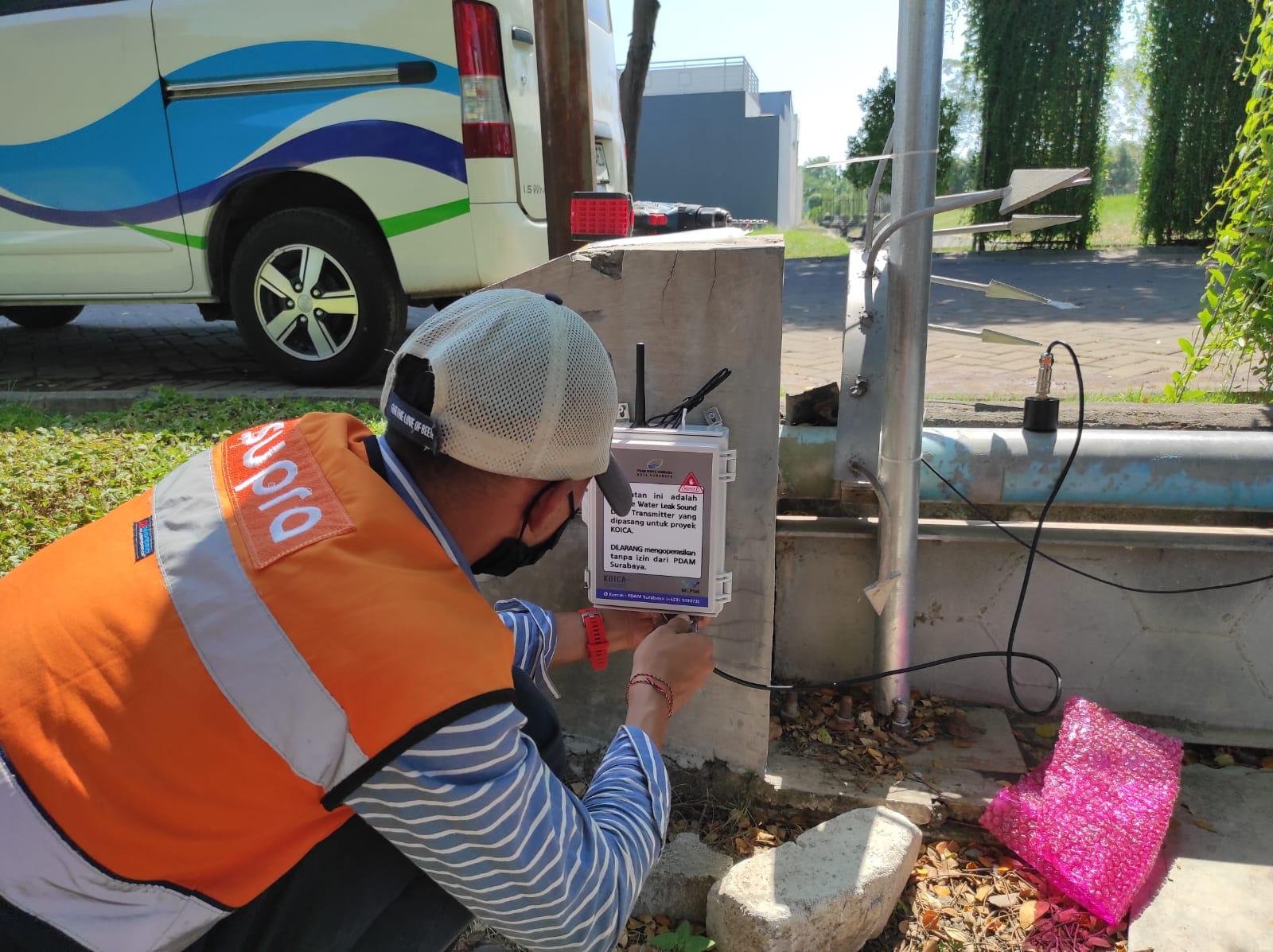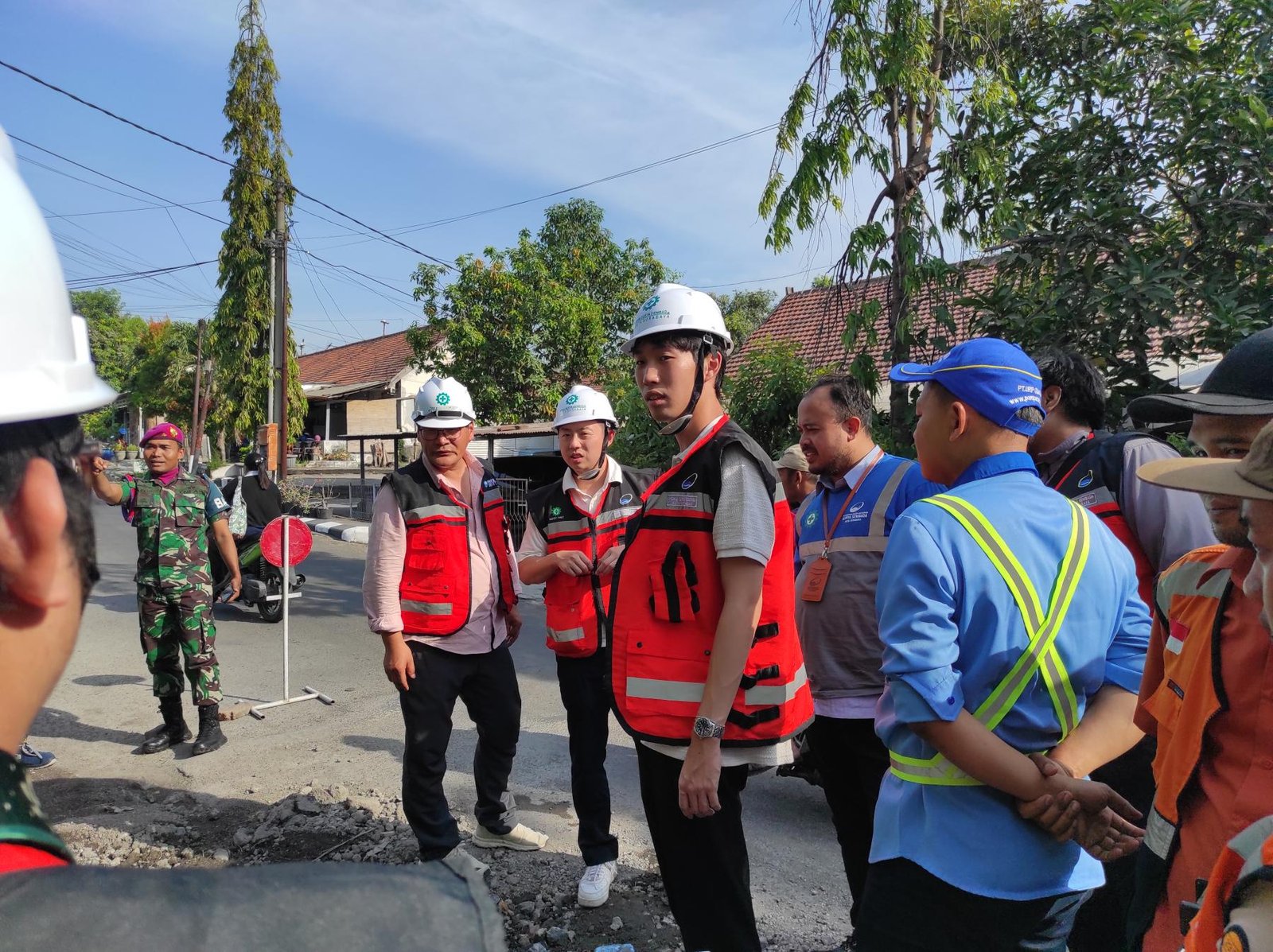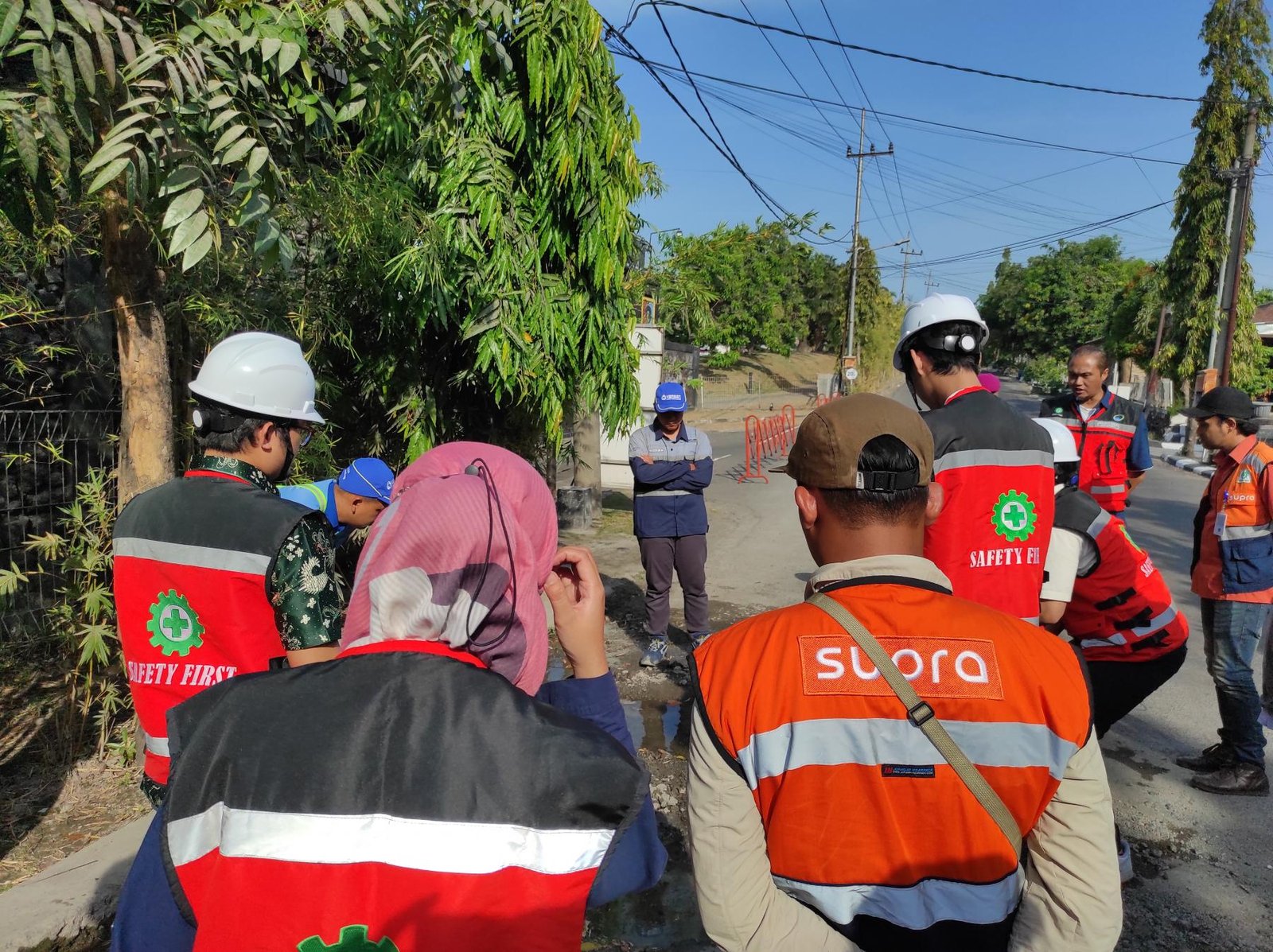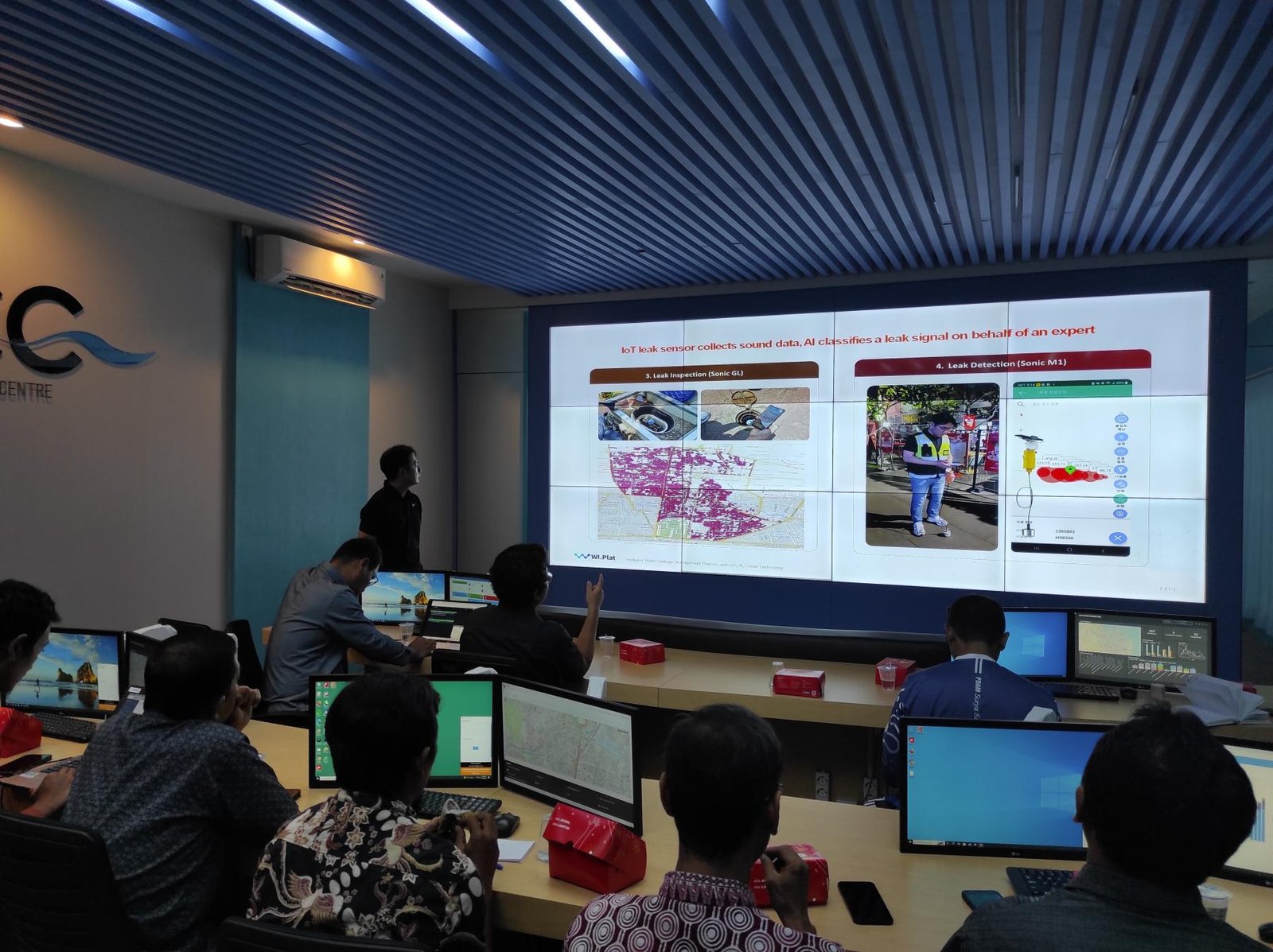
Non Revenue Water (NRW) Management for PDAM Surabaya - KOICA CTS 2
AI-Driven Leakage Detection and Pressure Management in DMA Network
Client: PDAM Surya Sembada
Sector: Public Water Utility
Location & Timeline: Surabaya, Indonesia, 2024
Executive Summary
In 2024, PDAM Surya Sembada initiated a strategic Non-Revenue Water (NRW) reduction program as part of the KOICA CTS 2 initiative, in collaboration with WI.Plat from South Korea. Acting as WI.Plat’s local implementation partner, the project aimed to reduce NRW levels within a designated District Metered Area (DMA) serving approximately 5,000 household connections.
The program integrated NELOW water network monitoring technology, M1 leakage detectors, and M2 pressure management devices, all supported by AI-powered analytics. The deployment allowed rapid detection of hidden leaks, precise pressure optimization, and accurate tracking of water loss patterns. This was the first large-scale demonstration in Indonesia combining advanced Korean water management technologies with on-the-ground operational expertise.
Project Context
Indonesia’s average NRW levels in urban utilities remain above 30–35%, significantly higher than the acceptable international benchmark of under 20%. This persistent challenge is driven by aging distribution networks, limited active leakage control, and insufficient metering accuracy. For Surabaya, reducing NRW was critical to optimizing supply, improving operational efficiency, and delaying costly infrastructure expansion.
The KOICA CTS 2 program provided an opportunity to introduce state-of-the-art NRW management solutions into the Indonesian utility sector. The Surabaya pilot DMA was selected for its representative mix of household densities, pipe materials, and operational conditions. By focusing on a single DMA with precise measurement and control points, the project could test and refine interventions before scaling city-wide.
Project Challenges
- Integration of AI-driven monitoring into an existing PDAM operational workflow.
- Accurate mapping and segmentation of underground distribution lines with incomplete as-built data.
- Coordinating between local crews and visiting Korean engineers for real-time field testing.
- Training local NRW teams on advanced leak detection and pressure control methodologies.
Approach
The project began with a baseline survey to map the DMA, verify meter accuracy, and establish initial NRW performance indicators. Leak detection activities used the M1 acoustic sensor system, which continuously scanned for abnormal noise signatures in the network. The AI platform processed this data to pinpoint potential leak locations with high precision.
Simultaneously, M2 pressure management devices were installed at key nodes to dynamically adjust pressure, reducing stress on the pipeline network and minimizing new leakage risks. The NELOW system served as the data backbone, aggregating flow, pressure, and acoustic data into a single dashboard accessible to both PDAM Surya Sembada and the KOICA-WI.Plat technical teams.
SUPRA coordinated the joint field deployment between Korean experts and PDAM’s NRW unit, ensuring accurate installation, calibration, and troubleshooting. Throughout the project, capacity building sessions equipped local staff with the skills to independently operate and maintain the technology beyond the pilot phase.
Outcomes and Impact
- Multiple hidden leaks identified and repaired, significantly improving DMA efficiency.
- Pressure profiles optimized, reducing network strain and extending asset life.
- Real-time data visibility enabled faster operational decisions and reduced response times.
- Provided a scalable model for NRW management applicable to other Indonesian utilities.
Early results demonstrated the potential to reduce NRW in the pilot DMA by more than 15% within the first operational cycle, with further gains expected as the system is refined.
Strategic Significance for NRW Management in Indonesia
This project serves as a proof-of-concept for integrating AI, IoT, and advanced leakage control into Indonesian water utilities. It addresses three critical barriers in NRW reduction nationwide:
- Data Accuracy – moving from estimated losses to verified, real-time measurement.
- Active Leakage Control – shifting from reactive repairs to proactive network monitoring.
- Operational Integration – embedding technology into day-to-day workflows for sustained performance.
The Surabaya experience confirms that international technology transfer, when combined with strong local execution, can deliver measurable improvements in water supply efficiency. For utilities across Indonesia, the KOICA CTS 2 model offers a pathway to achieve compliance with national NRW reduction targets while improving financial sustainability.
Key Facts and Highlights
- Pilot DMA: ~5,000 household connections.
- Technologies: NELOW system, M1 acoustic leakage detectors, M2 pressure controllers.
- Collaboration: KOICA CTS 2 program, WI.Plat (South Korea), PDAM Surya Sembada (Indonesia).
- Reduction Potential: >15% NRW drop within first operational cycle.
- Zero safety incidents during deployment.
Share:
If you face challenges in water, waste, or energy, whether it is system reliability, regulatory compliance, efficiency, or cost control, SUPRA is here to support you. When you connect with us, our experts will have a detailed discussion to understand your specific needs and determine which phase of the full-lifecycle delivery model fits your project best.






